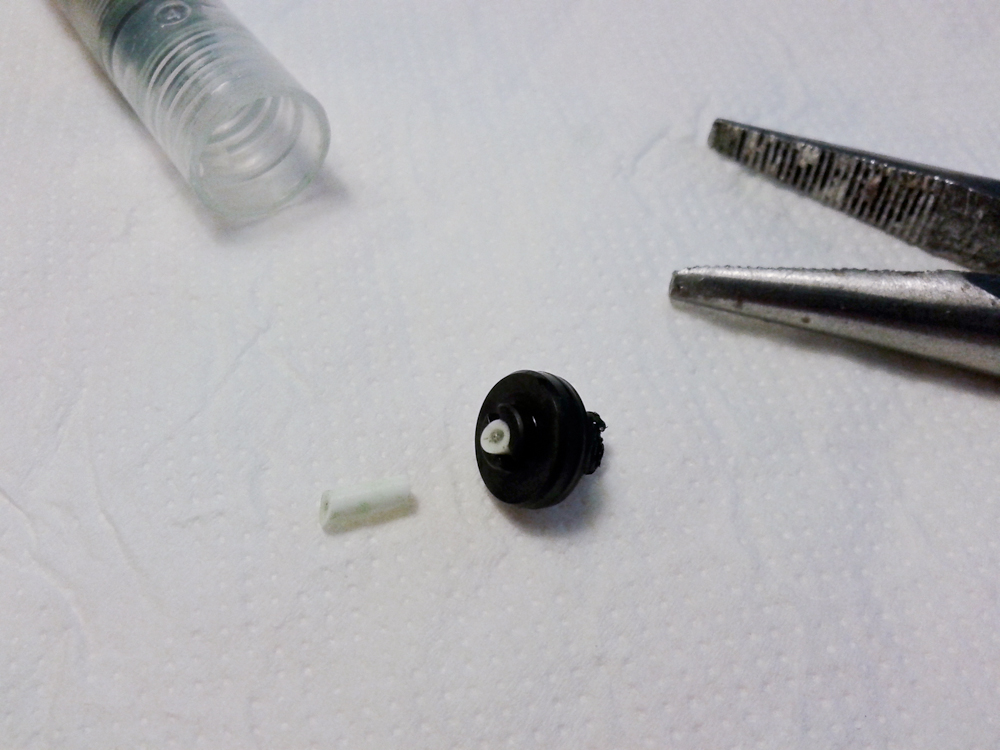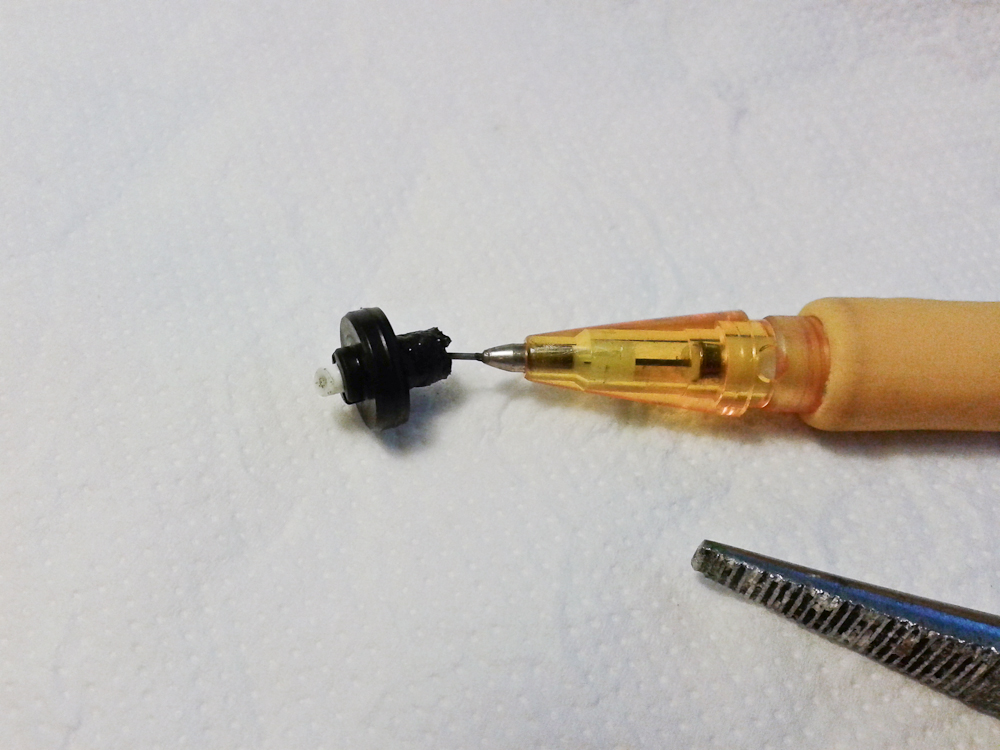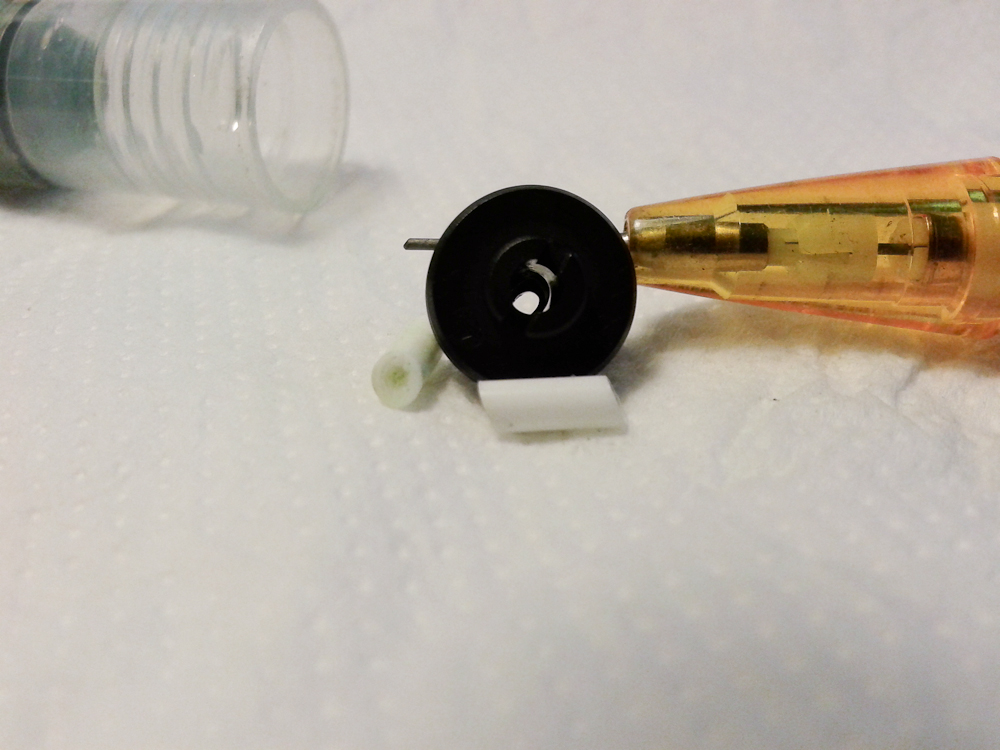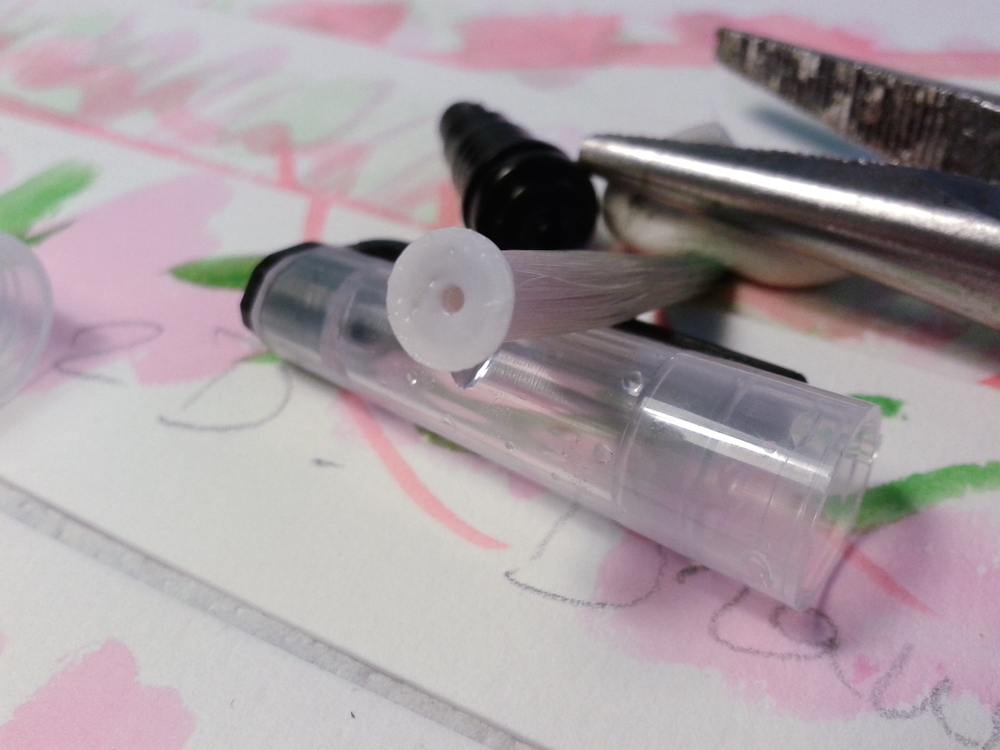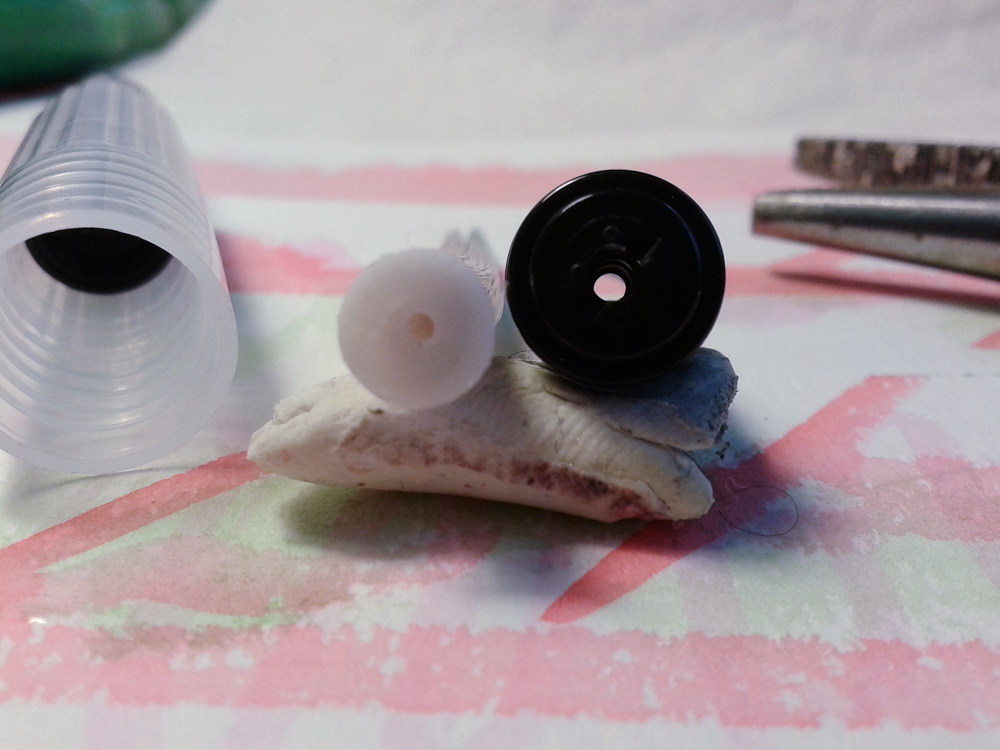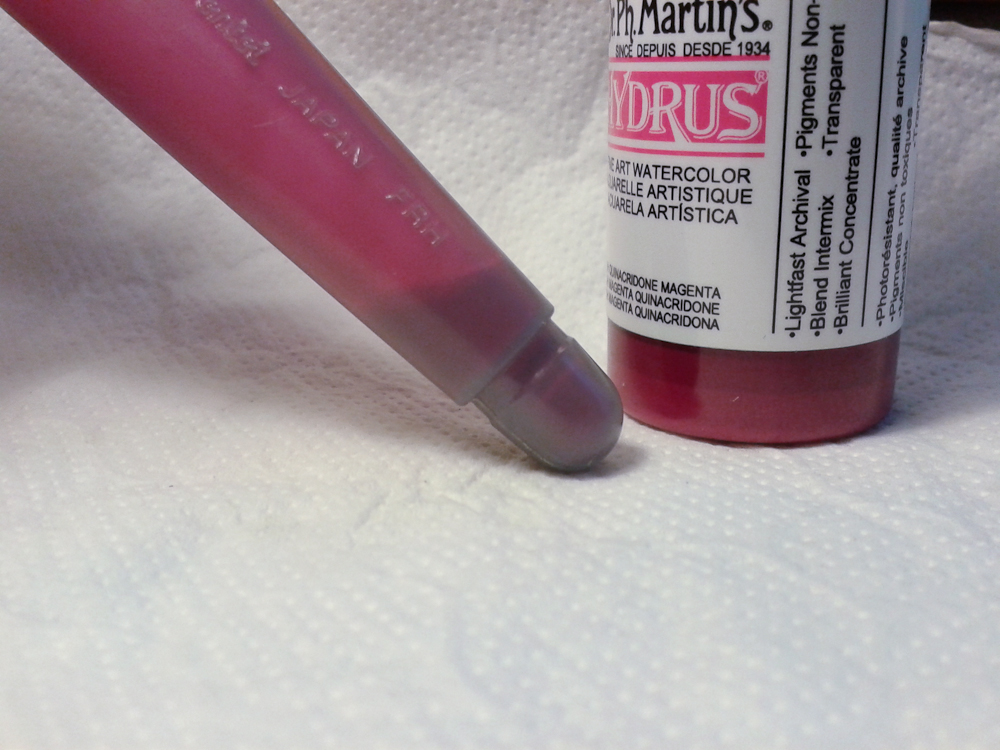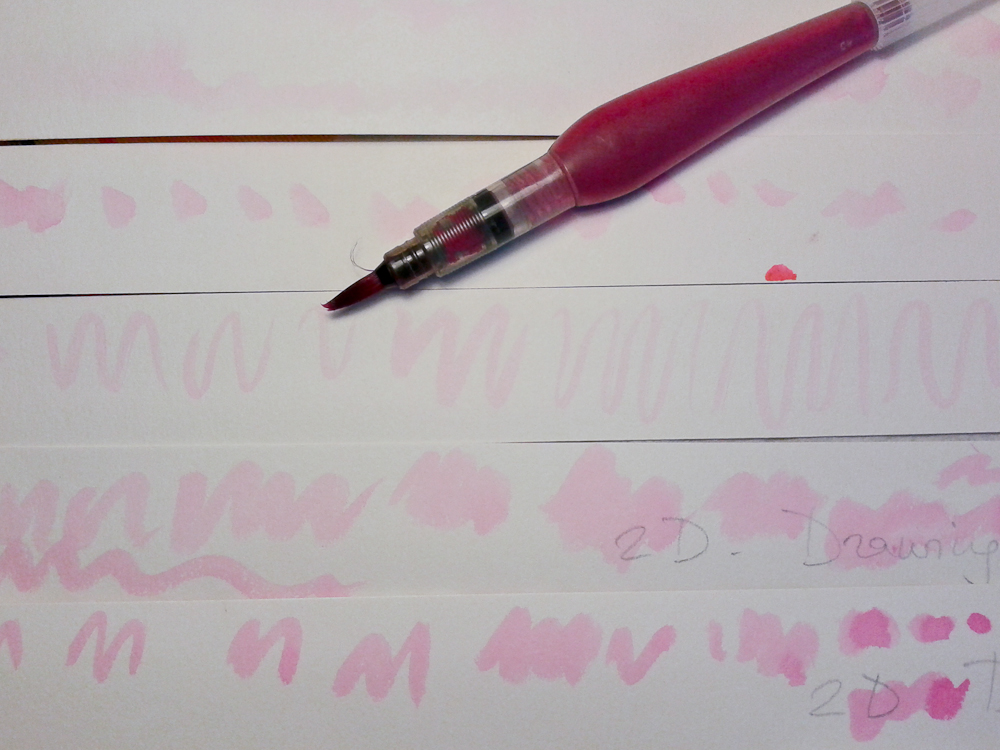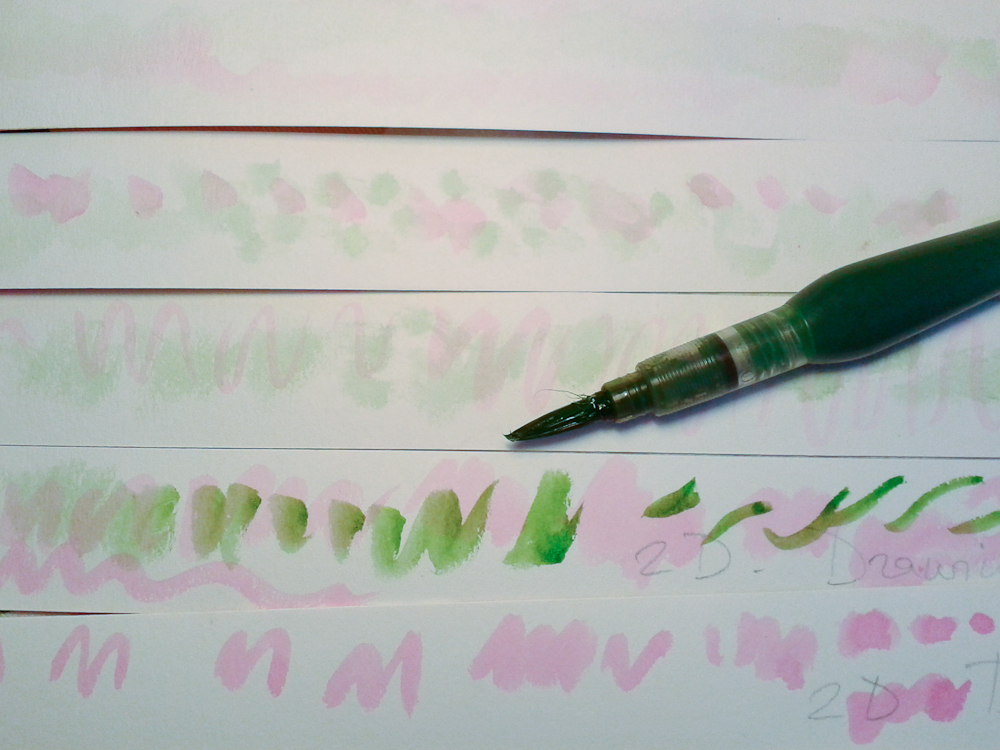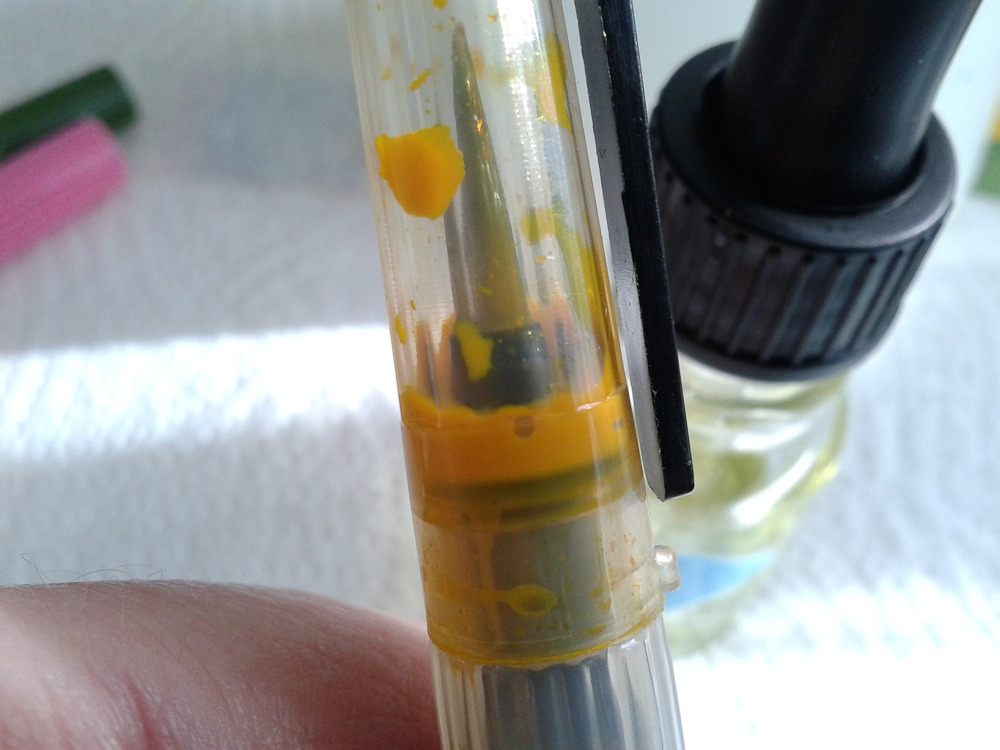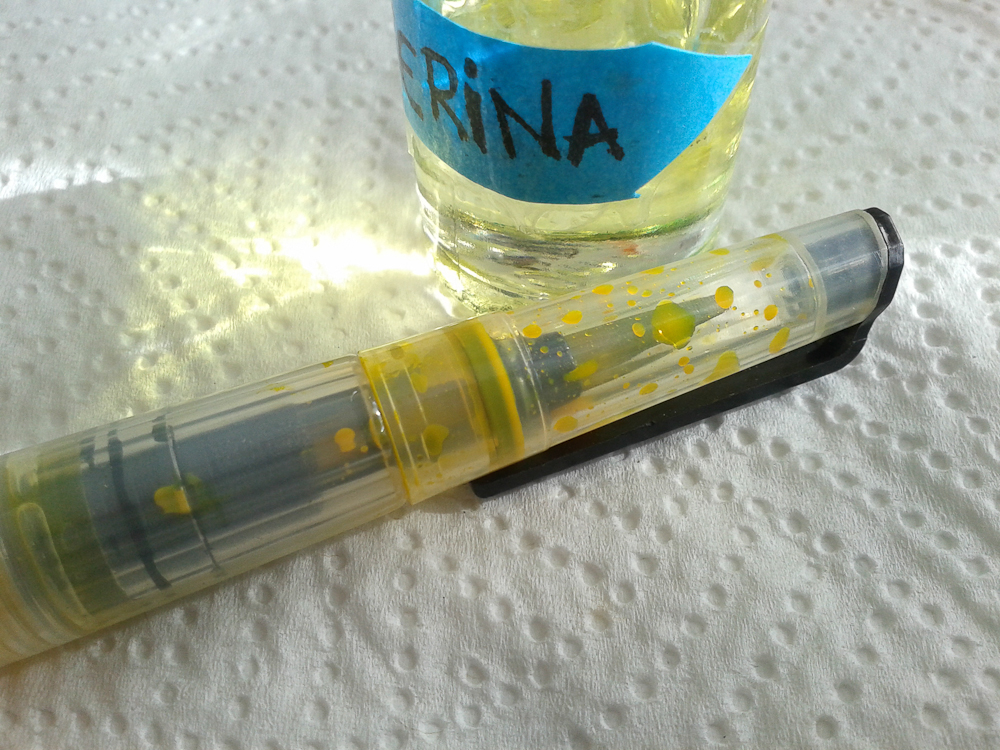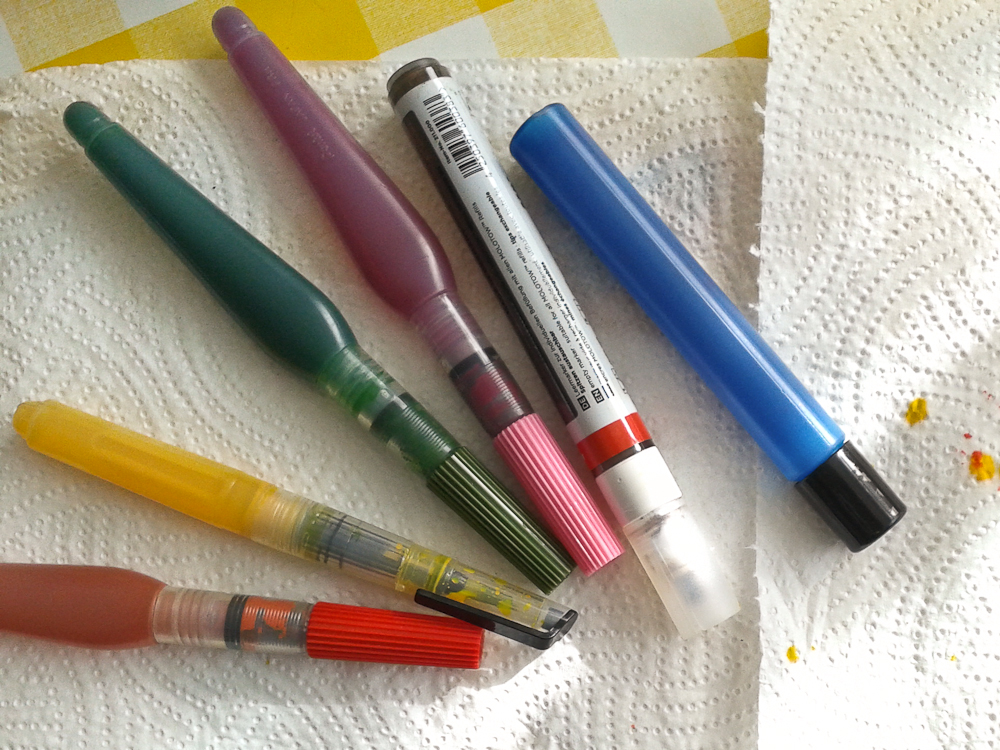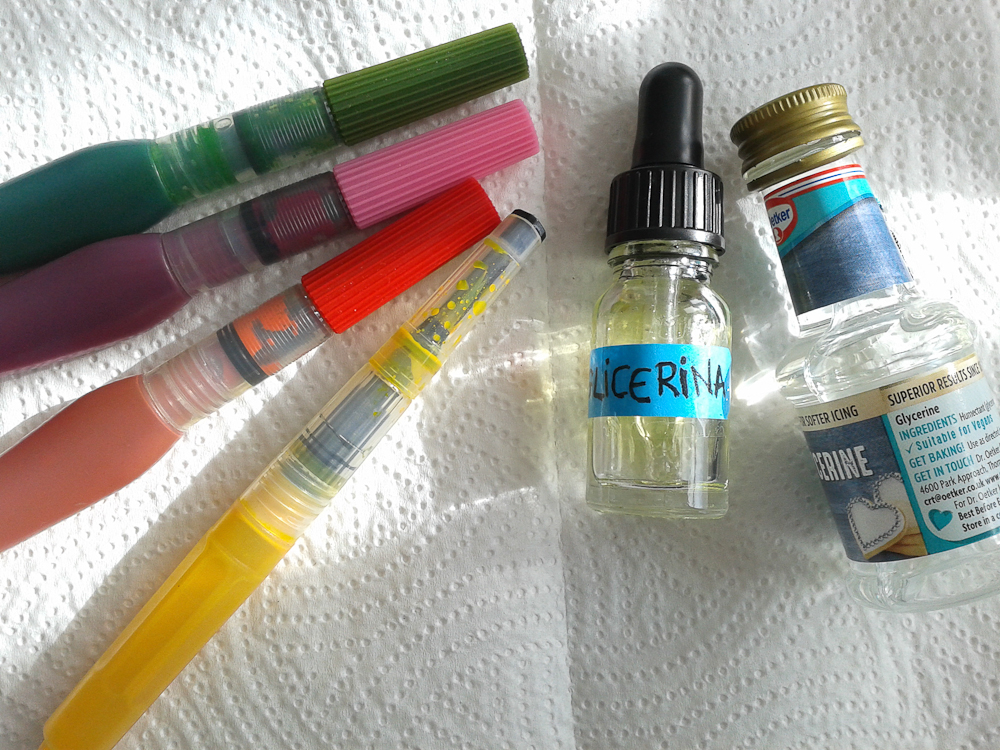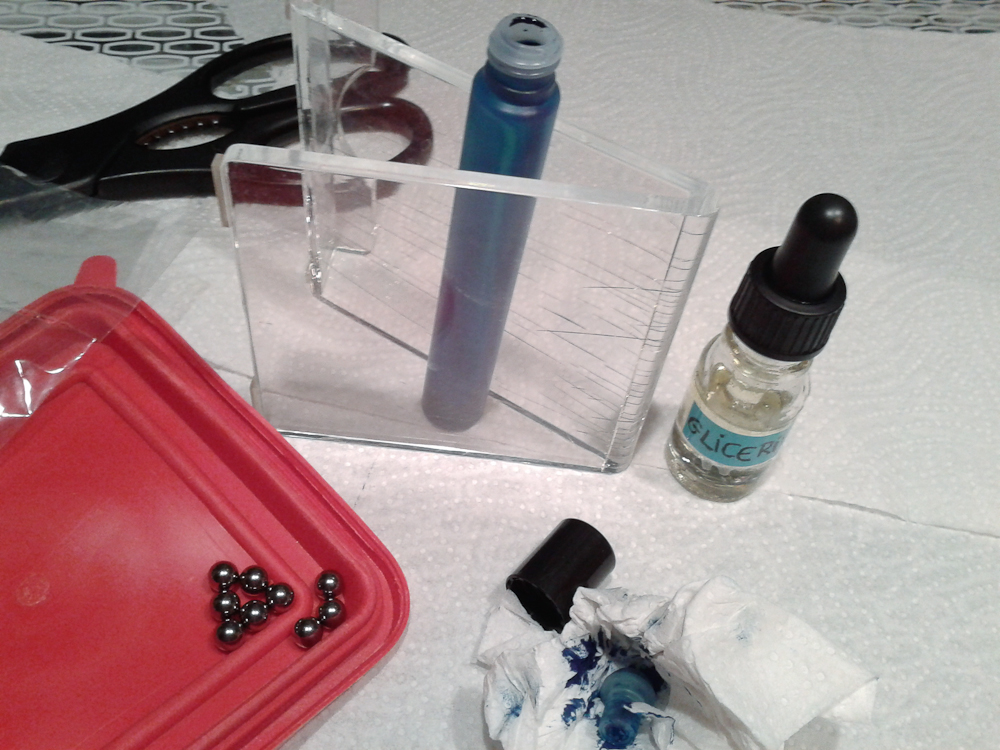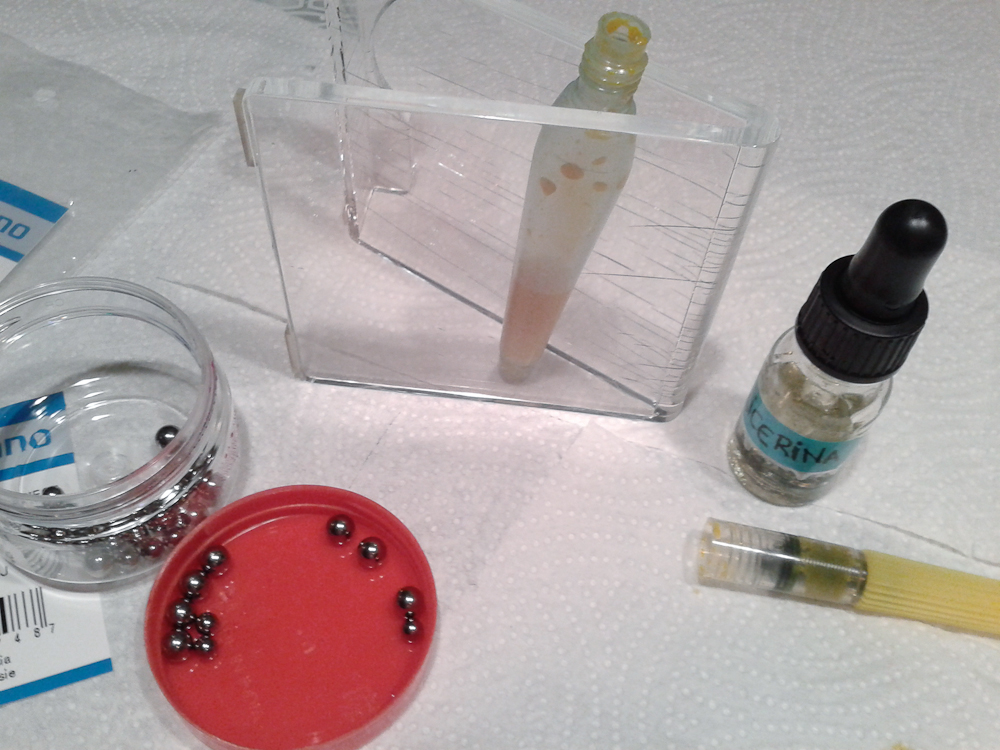Hello again.
In recent blog posts I mentioned my interest in adding some more vibrancy to my drawings. I started looking for some paint or some method that would solve my problem.
I think I’ve found it!
*I thought I had found it…
Somehow these random events helped with my discovery:
- First, a post with advice on how to unclog a waterbrush: http://drewscape.blogspot.com/2015/11/how-to-use-and-repair-clogged.html
- Then, a failed attempt at using Pentel colour brush pens: https://mariaramil.com/pentel-color-brush-review/
Finally, a random idea that came into my head: Why not try some liquid watercolour inside empty markers?
I had to try. I purchased 3 empty markers (sold empty and usually refillable with specific paints ) and some liquid watercolours.
I picked blue, yellow and brown and added three watercolour pencils to my sketching bag.
I went for a walk and stopped to do a sketch:
I found the watercolour too fluid for the markers: they poured too fast. I wanted to have more control.
Back home I tested some green watercolour on my Pentel water brush. The paint was too thick, it didn’t flow. I thinned it and tried again. Paint oozed through the top of the barrel but not through the brush.
I gave up for the day.
The next morning I woke up with an idea: Why not pull the brush apart and see if I could remove whatever was blocking the flow? If the gap was wider it might allow watercolour through.
This is what I did:
1) Here I pulled out the clogging valve, which has a tiny white tube inside. The tube’s hole is minute and Pentel waterbrushes will clog with anything thicker than water.
2) I used the lead of my mechanical pencil to push the inner tube out.
3) Close-up of the Pentel Aquash waterbrush valve, with the clogging white tube removed from inside the black valve.
4 and 5) Close-ups of a different brush system, wider than Pentel’s. The hole seemed large enough to let watercolour through.
6) To test my watercolour-filled brushes I used only a few drops of liquid watercolour (rather than risk wasting it if not successful)
7) It worked. The strokes gradually got denser, the watercolour had no trouble getting to the brush. I added some water to thin it, just as a precaution.
8) Similar success with green. I also added some water to thin the watercolur, as it had some pigment floating in it.
9) I added some more water to the yellow watercolour. It also seemed to work well.
So I went out and tested the new system. I ended up with my hands covered in watercolour, mostly yellow. I also added a new drawing to my sketchbook.
11) I realised there was a problem with the watercolour solution: it was still too fluid. It leaked whenever I shook the brush (particularly the yellow one). Maybe I’d thinned the watercolour too much?
12) I added some vegetable glycerin to help make the paint more viscous.
13) This was the set I took in the morning: Some newly refurbished watercolour brushes, plus two refillable markers (rollerball squeeze marker and a pump marker for blue and brown)
I couldn’t tell each pen’s colour at a glance when looking in my bag. So I replaced their transparent caps with different ones.
15) After my morning sketching I decided all my watercolours could do with some more glycerine, to make them more viscous and less prone to leaking.
… And off I went again to draw in the afteroon, this time hoping not to get leakages. I was also quite keen that the colour caps would facilitate picking the right brush first time.
I still got some leakage as I forgot to add glycerine to the blue rollerball bottle. Things seemed to be working better, though.
I still felt the paint could be thicker so I added some more glycerine to all of the pens.
I also put some stainless steel ball bearings inside the barrels, to help with the agitation.
I used smaller ball bearings for my Pentel brushes as the opening is quite narrow.
I tested the new watercolour mixtures in the morning:
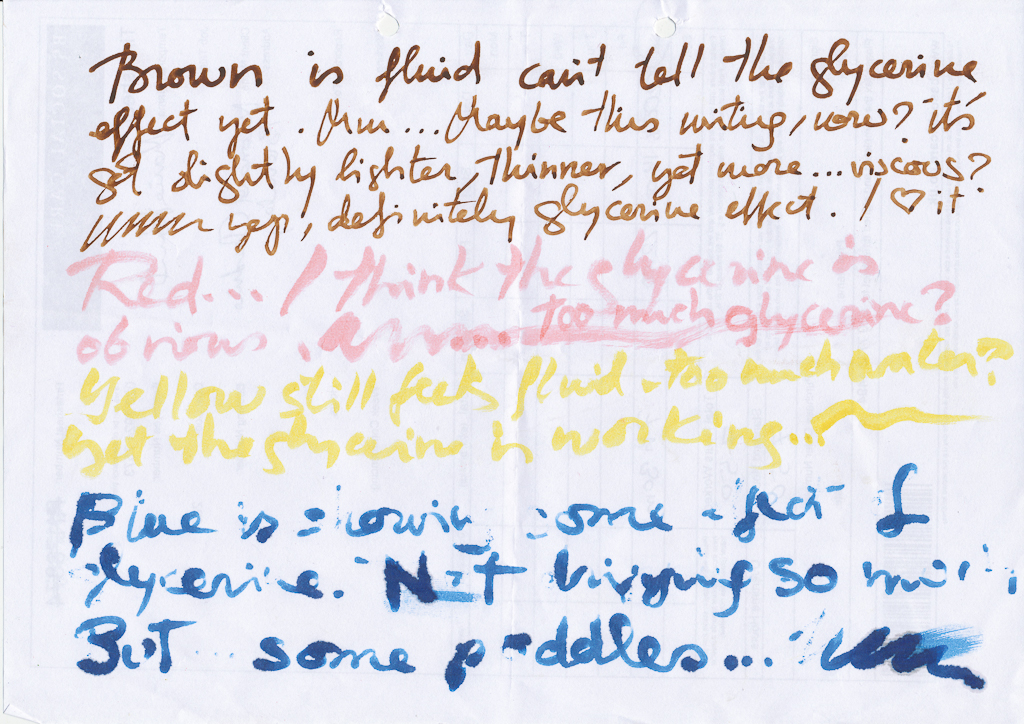
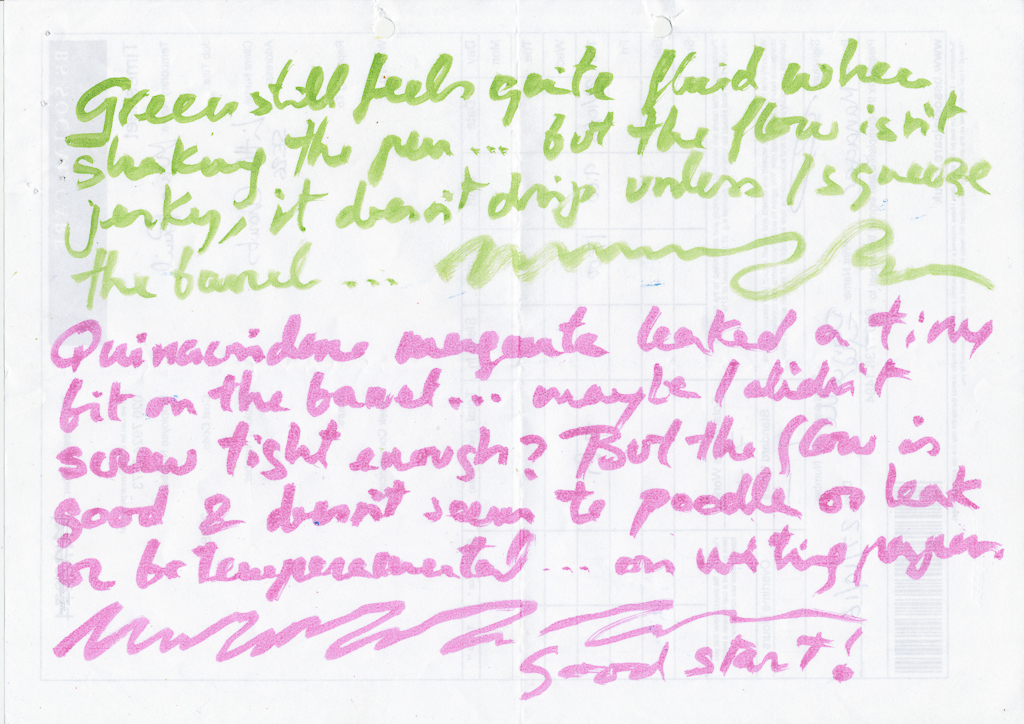
And this is a recent sketch with my current brushes and pens.
One massive advantage of having your pens already loaded with watercolour is that you don’t need to do any preparation.
It’s still early days in this experiment but I’m enjoying exploring the possibilities of taking my liquid watercolours out and about with me.
… To be continued.
*UPDATE
After some further experimenting I’ve noticed the waterbrushes filled with watercolour are unsuitable for my style of sketching: every time I end up with messy fingers, covered in paint.
Maybe if I had a table where I could rest my sketchbook when opening the pens it wouldn’t be a problem, but when you hold your sketchbook in one hand and have to negotiate a tight lid to open your bruhes somehow paint manages to splash/spill and the result is messy.
I’ve noticed the waterbrushes will leak some droplets of water inside their cap (even when not shaken and just filled with water). This is harmless when using water, but becomes an issue when you find specks of paint reaching your hands or your paper (This is regardless of the type of solution and thickness of the watercolour paint)
Besides this, the addition of glycerine affects the intensity and flow, so my watercolours look less loose that I’d like. They also took longer to dry, so…
I think I’ll keep looking …
Thanks for reading this!


